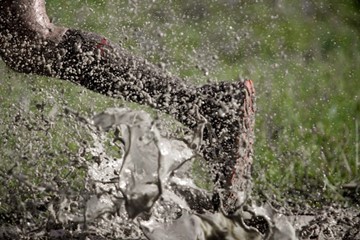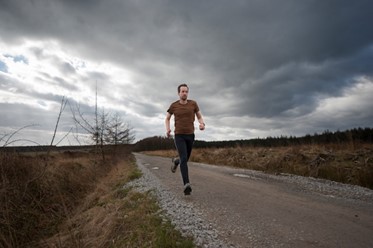John Telesca of Port Chester is an experienced fitness enthusiast with a passion for tough mudders. John has successfully completed two of the 10 Mile-25 obstacles Tough Mudder challenges and is gearing up to participate in a 3rd later this year. In the following article, John Telesca provides essential training strategies to help first-time “mudders” prepare effectively.
Embarking on your first Tough Mudder is an exciting challenge that demands a combination of physical endurance, mental fortitude, and strategic preparation. Known for its grueling obstacle courses and intense physical demands, a Tough Mudder event tests your strength, stamina, and teamwork.
John Telesca of Port Chester Emphasizes the Race Format
Before diving into training, it's crucial to understand what a Tough Mudder entails. Typically, Tough Mudder courses range from
8 to 12 miles and feature a series of challenging obstacles designed to test various aspects of fitness, including strength, agility, and mental resilience. Obstacles may include wall climbs, mud crawls, and water challenges.
Knowing what to expect will help you tailor your training program to address the specific demands of the event. Review the course map and obstacle list for your particular race to get a sense of what you’ll be facing.
Develop a Comprehensive Training Plan
A well-rounded training plan is essential for preparing for a race day. Your plan should include a mix of cardiovascular training, strength building, and functional fitness exercises. Here’s how to structure your training:
- Cardiovascular Training: Since the course involves long-distance running, incorporate a mix of running, cycling, and swimming into your routine. John Telesca of Port Chester suggests aiming for at least three cardio sessions per week, progressively increasing your mileage to build endurance.
- Strength Training: Strength is crucial for overcoming obstacles. Focus on full-body strength training with exercises like squats, deadlifts, push-ups, and pull-ups. Incorporate functional movements that mimic obstacles, such as box jumps and rope climbs, to build relevant strength.
- High-Intensity Interval Training (HIIT): HIIT workouts can boost your cardiovascular fitness and improve your overall endurance. Include intervals of intense exercise followed by rest periods to simulate the bursts of effort required during the event.
- Obstacle-Specific Training: To prepare for the specific challenges of the race, incorporate obstacle-specific training. Practice climbing ropes, crawling under low barriers, and carrying weights to build the skills necessary for tackling the course.
Focus on Functional Fitness
John Telesca of NY explains that functional fitness training prepares you for the practical challenges of the course. Incorporate exercises that enhance your agility, balance, and coordination. Some effective functional fitness exercises include:
- Bear Crawls: Simulate the crawling obstacles by practicing bear crawls, which improve upper body strength and core stability.
- Monkey Bars: Train on monkey bars or similar apparatuses to develop grip strength and upper body endurance.
- Sled Pushes and Pulls: Use sleds or resistance bands to mimic the pushing and pulling actions required in certain obstacles.
Incorporate Flexibility and Mobility Work
Flexibility and mobility are often overlooked but are essential for avoiding injuries and improving performance. Incorporate stretching and mobility exercises into your routine to enhance your range of motion and reduce muscle tightness. Key areas to focus on include:
- Dynamic Stretching: Perform dynamic stretches before workouts to prepare your muscles and joints for physical activity.
- Foam Rolling: John Telesca of NY suggests using a foam roller to release muscle tension and improve blood flow. Focus on areas that may be prone to tightness, such as your calves, quads, and shoulders.
- Yoga: Integrate yoga sessions to improve flexibility, balance, and mental relaxation. Yoga can also aid in recovery and prevent injuries.
 Build Mental Toughness
Build Mental Toughness
A Tough Mudder is as much a mental challenge as it is a physical one. Building mental toughness is crucial for overcoming obstacles and pushing through discomfort. Strategies to enhance mental resilience include:
- Visualization: Practice visualizing yourself successfully completing obstacles and crossing the finish line. Visualization can boost confidence and reduce anxiety.
- Positive Affirmations: Use positive affirmations to reinforce your belief in your abilities. Remind yourself of your strengths and accomplishments throughout your training.
- Challenge Yourself: Push yourself outside your comfort zone during training. Tackle challenging workouts and obstacles to build mental resilience and adaptability.
Plan for Nutrition and Hydration
Proper nutrition and hydration are vital for optimal performance and recovery. John Telesca says to focus on a balanced diet that includes:
- Carbohydrates: Provide energy for intense workouts and long runs. Include whole grains, fruits, and vegetables in your diet.
- Proteins: Support muscle repair and growth. Incorporate lean proteins such as chicken, fish, beans, and tofu.
- Fats: Include healthy fats from sources like avocados, nuts, and olive oil for sustained energy.
- Hydration: Stay hydrated by drinking plenty of water throughout the day. Consider electrolyte-rich beverages for replenishing lost minerals during intense workouts.
Practice Recovery Techniques
Recovery is an essential part of any training program. Allow adequate time for your body to rest and repair by incorporating recovery techniques such as:
Rest days are a crucial component of any effective training regimen. They allow your muscles to repair and rebuild, which is essential for strength and endurance gains. During exercise, especially high-intensity workouts, your muscles experience microscopic tears. Rest days provide the time needed for these tissues to heal, which not only helps in muscle growth but also in preventing injuries. Without adequate rest, you risk overtraining, which can lead to fatigue, decreased performance, and a higher likelihood of injury. Scheduling regular rest days ensures your body has the necessary time to recover and adapt, leading to better long-term results.
Active recovery involves low-intensity exercises that promote blood circulation without exerting too much strain on your muscles. Activities such as walking, gentle stretching, yoga, or light swimming are excellent choices. These activities help flush out metabolic waste products from your muscles and bring in fresh, oxygen-rich blood, which aids in the recovery process. Active recovery can also help reduce muscle stiffness and soreness, keeping you flexible and mobile. By incorporating active recovery sessions into your routine, you not only facilitate faster healing but also maintain your overall fitness without overloading your body.
Sleep is one of the most vital yet often overlooked components of a successful training program. Quality sleep supports numerous physiological processes crucial for recovery and performance. During deep sleep, the body releases growth hormone, which plays a key role in muscle repair and growth. Sleep also helps consolidate memories and learning, which is essential for mastering new techniques and strategies in your training. Aim for 7-9 hours of restful sleep each night to optimize these benefits. Creating a sleep-friendly environment—such as maintaining a cool, dark room and establishing a regular bedtime routine—can enhance the quality of your sleep. Prioritizing sleep ensures you wake up refreshed, with improved cognitive function, better mood, and a body that's ready to tackle the next training session.
 Gear Up for Success
Gear Up for Success
John Telesca says to invest in appropriate gear to ensure you’re prepared for the Tough Mudder experience. Key items to consider include:
- Trail Running Shoes: Choose shoes with good traction and support for navigating varied terrain and obstacles.
- Moisture-Wicking Clothing: Wear moisture-wicking clothing to keep dry and comfortable during the race.
- Gloves: Consider gloves with grip-enhancing features to improve your performance on obstacles.
Conclusion
John Telesca of Port Chester concludes that preparing for your first Tough Mudder requires a combination of physical training, mental preparation, and strategic planning. By developing a comprehensive training plan, focusing on functional fitness, and building mental toughness, you’ll be well-equipped to tackle the challenges of the event. Prioritize proper nutrition, recovery, and gear to enhance your performance and ensure a successful race. With dedication and preparation, you’ll be ready to embrace the adventure and achieve your Tough Mudder goals.
 Build Mental Toughness
Build Mental Toughness Gear Up for Success
Gear Up for Success